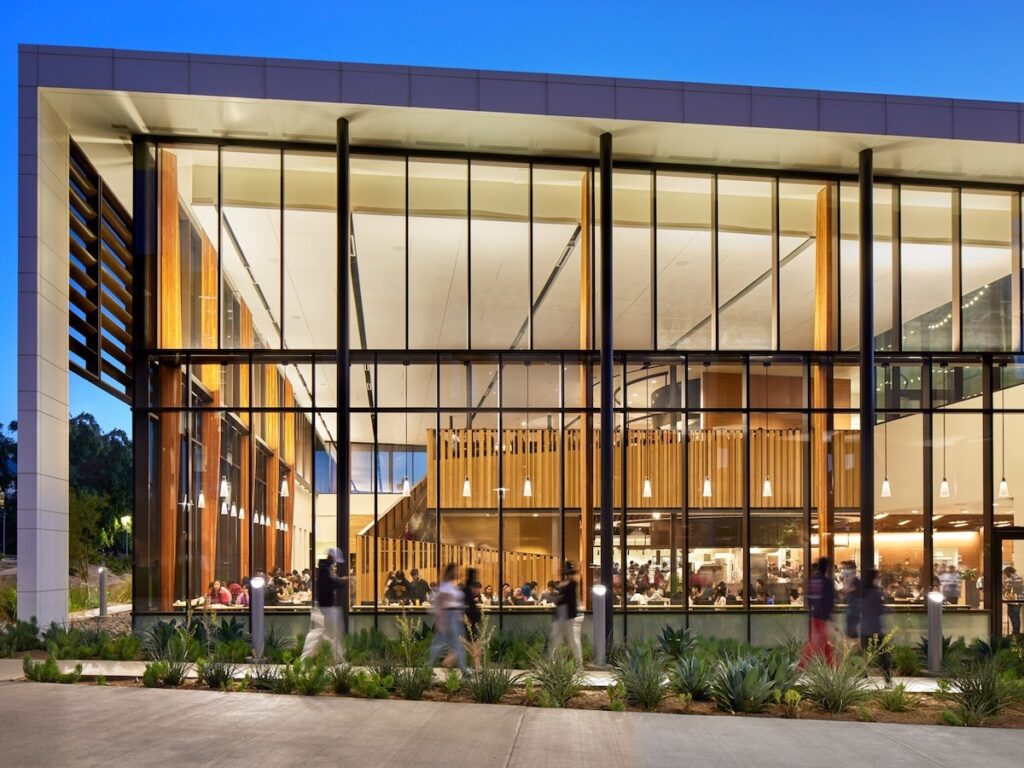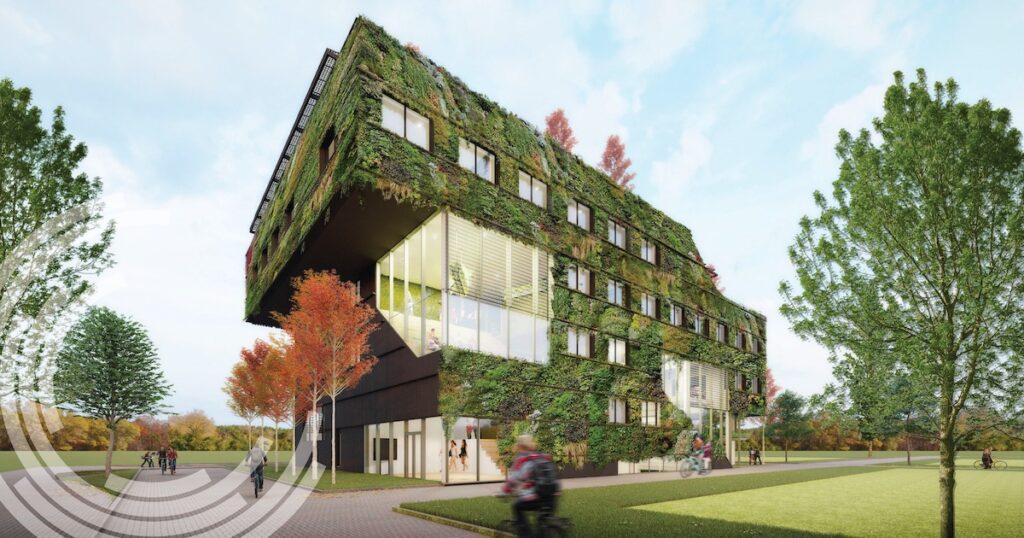Green building certifications, such as LEED (Leadership in Energy and Environmental Design) and WELL Building Standard, have emerged as powerful tools to promote conscious workplace design.
These certifications not only prioritize environmental sustainability but also prioritize the health and well-being of occupants.
Below, we’ll explore the world of green building certifications, with a focus on LEED and WELL, and understand how they are transforming workplaces for the better.
- Green Building Certifications: LEED
- Green Building Certifications: WELL Building Standard
- The Synergy between LEED and WELL
Green Building Certifications: LEED
LEED, developed by the U.S. Green Building Council (USGBC), is one of the most recognized and widely used green building certifications globally.
LEED certification evaluates buildings on various aspects of sustainability, including energy efficiency, water conservation, materials selection, indoor air quality, and sustainable site development.

It provides a comprehensive framework for architects, builders, and building owners to design and construct environmentally responsible buildings.
The LEED certification process involves earning points in different categories, such as Sustainable Sites, Water Efficiency, Energy and Atmosphere, Materials and Resources, Indoor Environmental Quality, and Innovation in Design.
The more points a building earns, the higher the level of certification it achieves, ranging from Certified to Silver, Gold, or Platinum.
Promoting Sustainable Design
Energy Efficiency
LEED encourages energy-efficient designs through measures like efficient HVAC systems, lighting, and insulation. Buildings with LEED certification consume less energy, resulting in lower utility bills and reduced carbon emissions.
Water Conservation
Water-efficient fixtures and landscaping practices help reduce water consumption in LEED-certified buildings. Rainwater harvesting and greywater recycling are also promoted.
Sustainable Materials
The use of sustainable and locally sourced materials is a core principle of LEED. This reduces the carbon footprint associated with transportation and supports local economies.
Indoor Air Quality
LEED emphasizes indoor air quality by requiring low-emission materials and efficient ventilation systems, creating a healthier and more comfortable environment for occupants.
Sustainable Site Development
LEED encourages responsible site selection and development, promoting urban regeneration and reducing the impact on natural habitats.
Green Building Certifications: WELL Building Standard

While LEED focuses on the environmental aspects of building design, the WELL Building Standard complements it by emphasizing the health and well-being of building occupants.
Developed by the International WELL Building Institute (IWBI), WELL certification evaluates buildings based on several categories that directly impact occupant health and well-being, including air, water, nourishment, light, fitness, and comfort.
The WELL certification process is also points-based, with four levels of certification: Silver, Gold, Platinum, and Core.
To achieve certification, buildings must meet specific requirements and earn a minimum number of points in each category.
Promoting Occupant Well-Being
Air Quality
WELL promotes indoor air quality through rigorous testing and monitoring, ensuring that occupants breathe clean and healthy air. This includes filtration systems, humidity control, and ventilation strategies.
Water Quality
The standard focuses on providing access to clean and safe drinking water while also promoting water conservation measures.
Nutrition
Wellness starts with what we consume. WELL encourages healthy eating habits by providing access to fresh fruits and vegetables and promoting nutritional education.
Lighting
Natural light is crucial for our well-being. WELL emphasizes the importance of access to natural light and adequate artificial lighting for optimal productivity and comfort.
Fitness
WELL-certified buildings promote physical activity by providing fitness amenities such as gyms and encouraging stair use over elevators.
Comfort
Thermal, acoustic, and ergonomic comfort are key aspects of WELL. These considerations lead to improved productivity and overall well-being.
The Synergy between LEED and WELL
LEED and WELL certifications are not mutually exclusive but can be pursued together, creating buildings that are both environmentally sustainable and occupant-centric.
The synergy between these two certifications results in spaces that not only reduce environmental impact but also enhance the physical and mental health of those who occupy them.
For example, a LEED-certified building might incorporate energy-efficient lighting, but a WELL certification would ensure that the lighting is designed to reduce eye strain and promote circadian rhythms.
Similarly, LEED’s focus on indoor air quality aligns with WELL’s commitment to providing healthy air for occupants.
Green building certifications like LEED and WELL have ushered in a new era of conscious workplace design.
They prioritize sustainability, energy efficiency, and occupant well-being, reshaping the way we think about our built environments.
These certifications not only benefit the planet by reducing resource consumption and carbon emissions but also contribute to the physical and mental well-being of the people who live and work in these spaces.
As our society becomes increasingly aware of the importance of sustainable and healthy living, LEED and WELL certifications will continue to play a pivotal role in shaping the buildings of the future.
Building owners, architects, and designers have a unique opportunity to make a positive impact on our planet and the lives of those who inhabit their creations by embracing these certifications in their projects.








